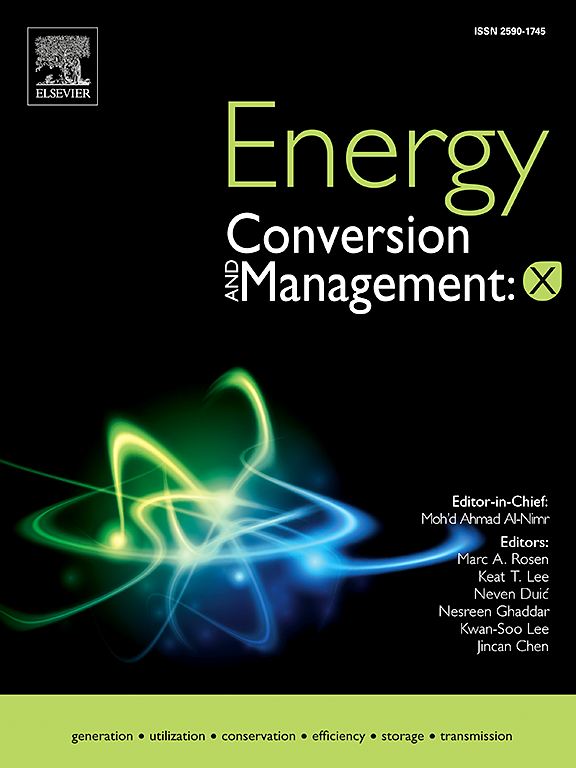Towards biogas production from vinasse and pentose liquor from sugarcane biorefineries
IF 7.1
Q1 ENERGY & FUELS
引用次数: 0
Abstract
Vinasse and pentose liquor are liquid streams produced as waste in sugarcane mills. Biogas production from these streams offers significant potential for energy recovery, contributing to sustainability and reducing fossil fuel dependency. While methane production from vinasse has been extensively studied, the co-digestion of vinasse and pentose liquor for biogas production remains underexplored. This review evaluates the potential of co-digesting these byproducts, by analyzing substrate composition, reactor configurations, and process conditions to optimize methane yield. Key influencing factors include sulfate concentration, temperature, toxic compounds, organic loading rate, and reactor design, which influence microbial activity and the balance between sulfate-reducing bacteria and methanogens. The pretreatment to obtain pentose liquor is especially important for biogas production. Hydrothermal pretreatment is particularly effective, enhancing sugar recovery and minimizing inhibitory compounds like furans, which hinder anaerobic digestion. The results show that vinasse and pentose liquor co-digestion significantly enhance methane production, presenting a promising strategy for maximizing energy recovery. Studies reported an increase in the biochemical methane potential by up to 118%. Additionally, separating the acidogenic and methanogenic phases improves process stability. These findings highlight the potential of these solutions to contribute to the sugarcane industry.

求助全文
约1分钟内获得全文
求助全文
来源期刊

Energy Conversion and Management-X
Multiple-
CiteScore
8.80
自引率
3.20%
发文量
180
审稿时长
58 days
期刊介绍:
Energy Conversion and Management: X is the open access extension of the reputable journal Energy Conversion and Management, serving as a platform for interdisciplinary research on a wide array of critical energy subjects. The journal is dedicated to publishing original contributions and in-depth technical review articles that present groundbreaking research on topics spanning energy generation, utilization, conversion, storage, transmission, conservation, management, and sustainability.
The scope of Energy Conversion and Management: X encompasses various forms of energy, including mechanical, thermal, nuclear, chemical, electromagnetic, magnetic, and electric energy. It addresses all known energy resources, highlighting both conventional sources like fossil fuels and nuclear power, as well as renewable resources such as solar, biomass, hydro, wind, geothermal, and ocean energy.
 求助内容:
求助内容: 应助结果提醒方式:
应助结果提醒方式:


